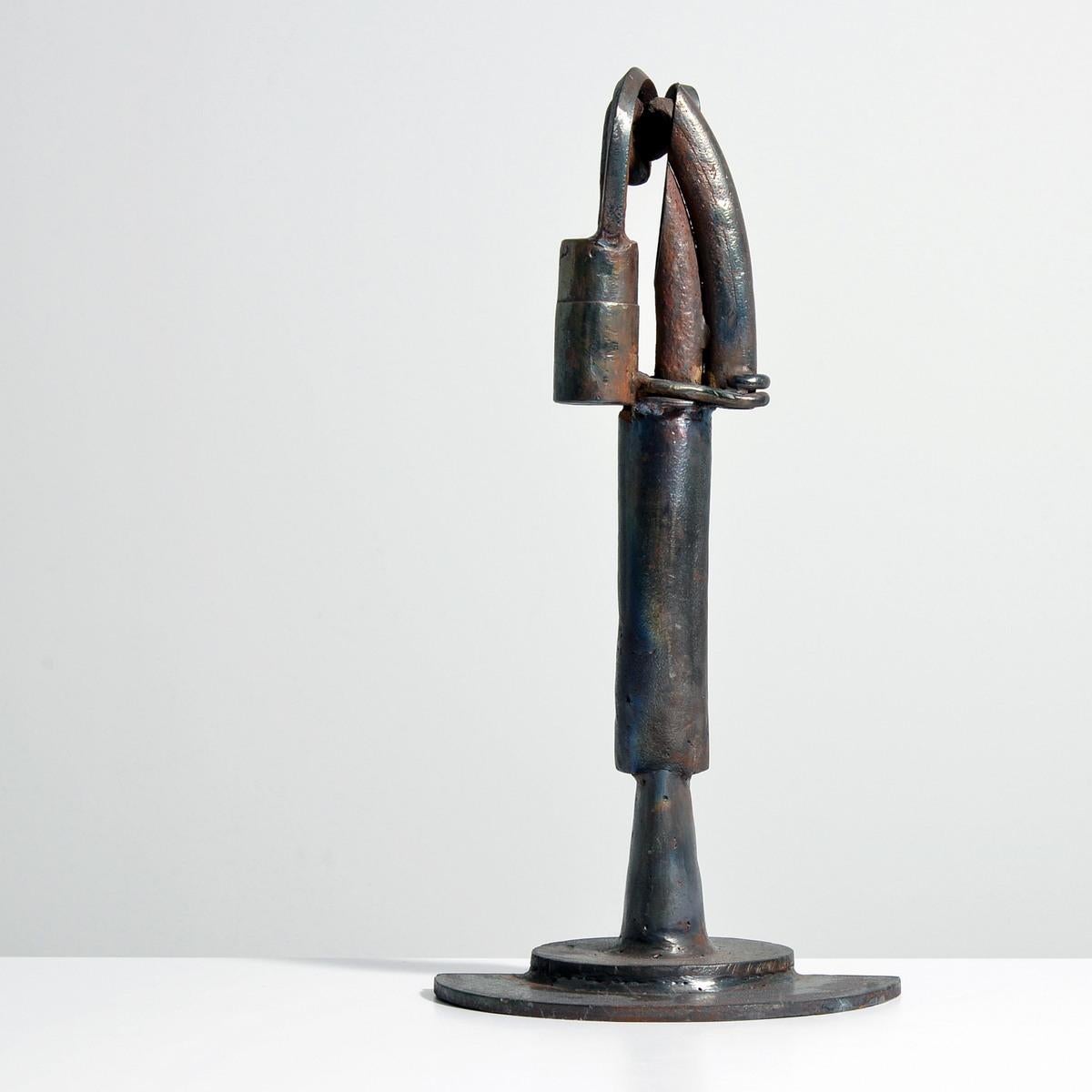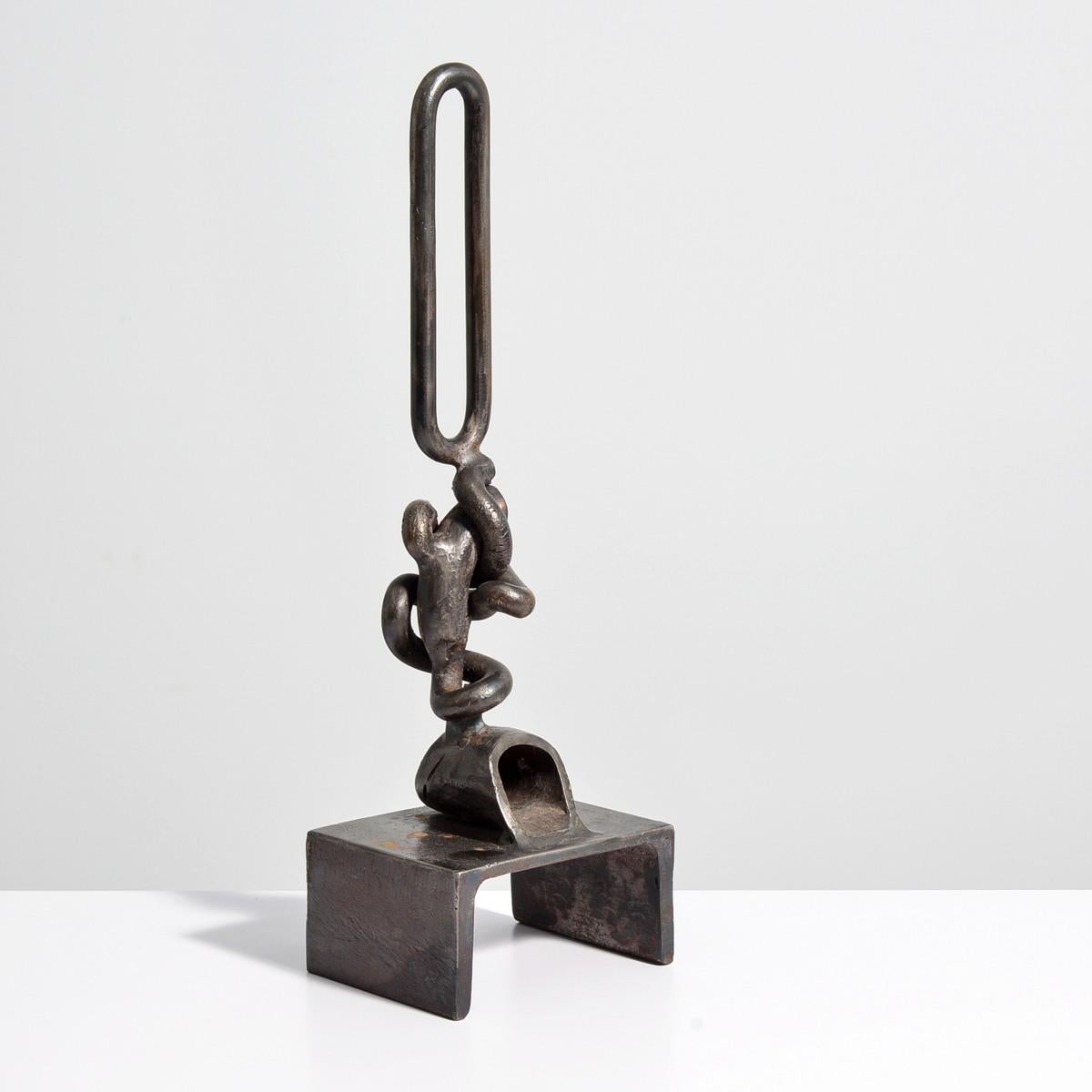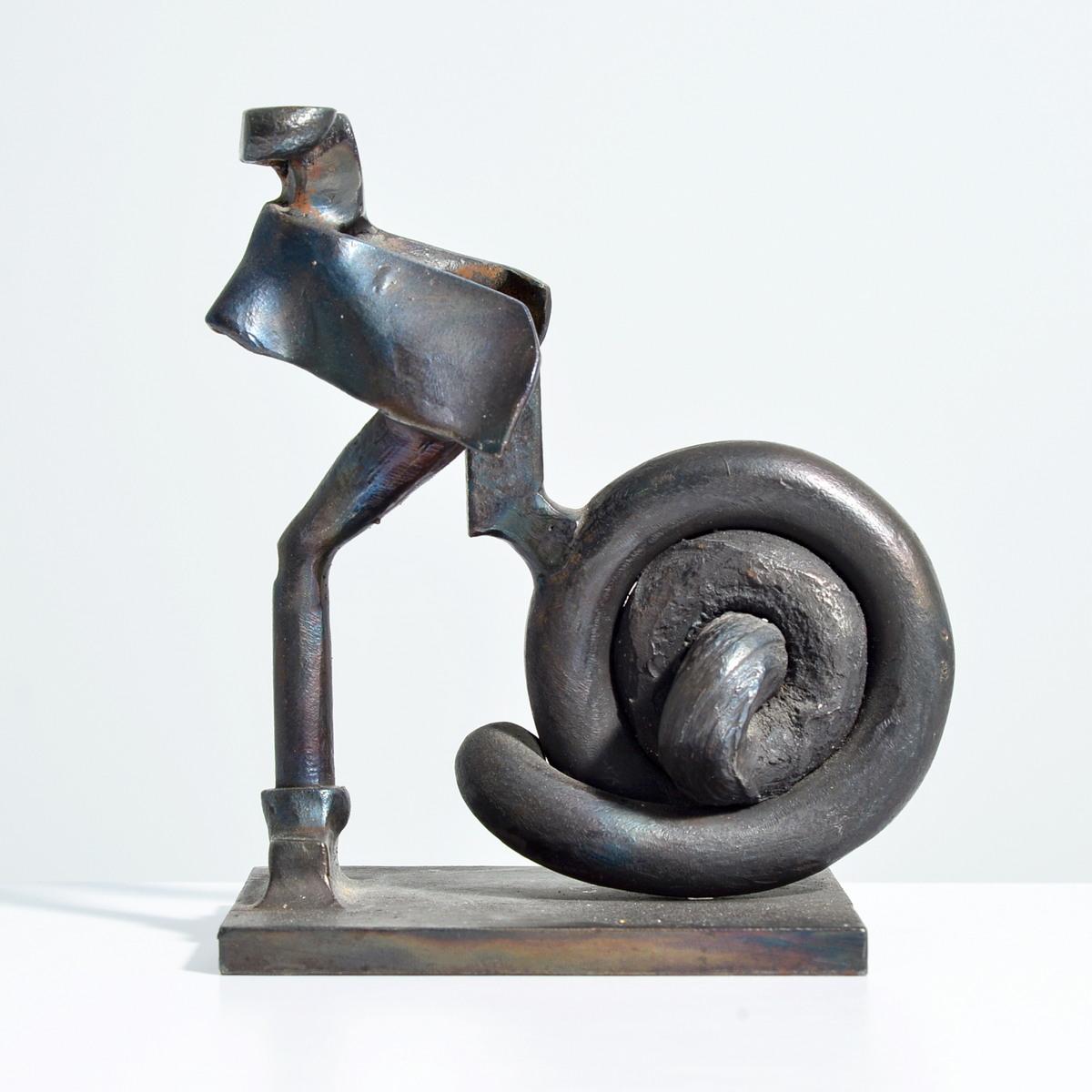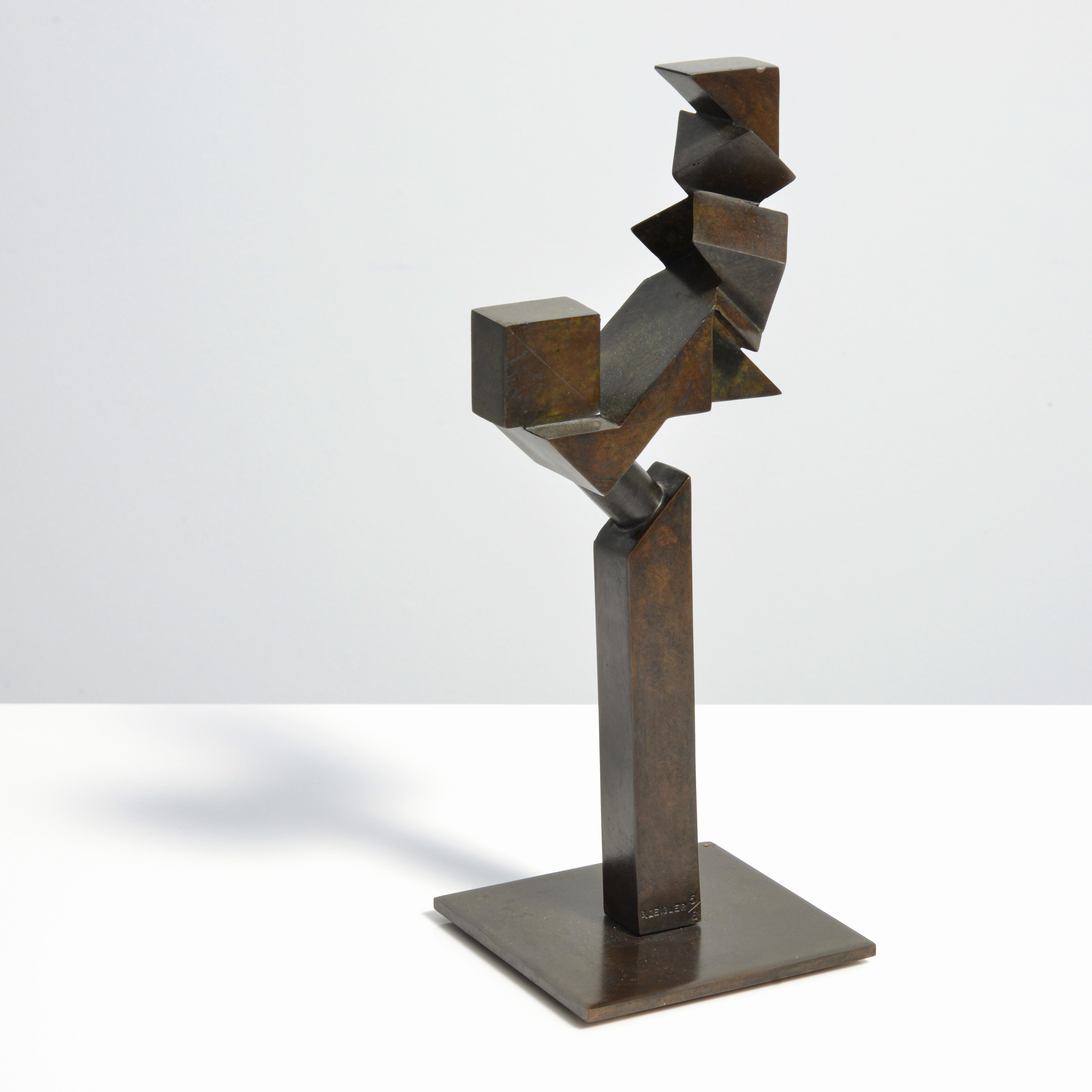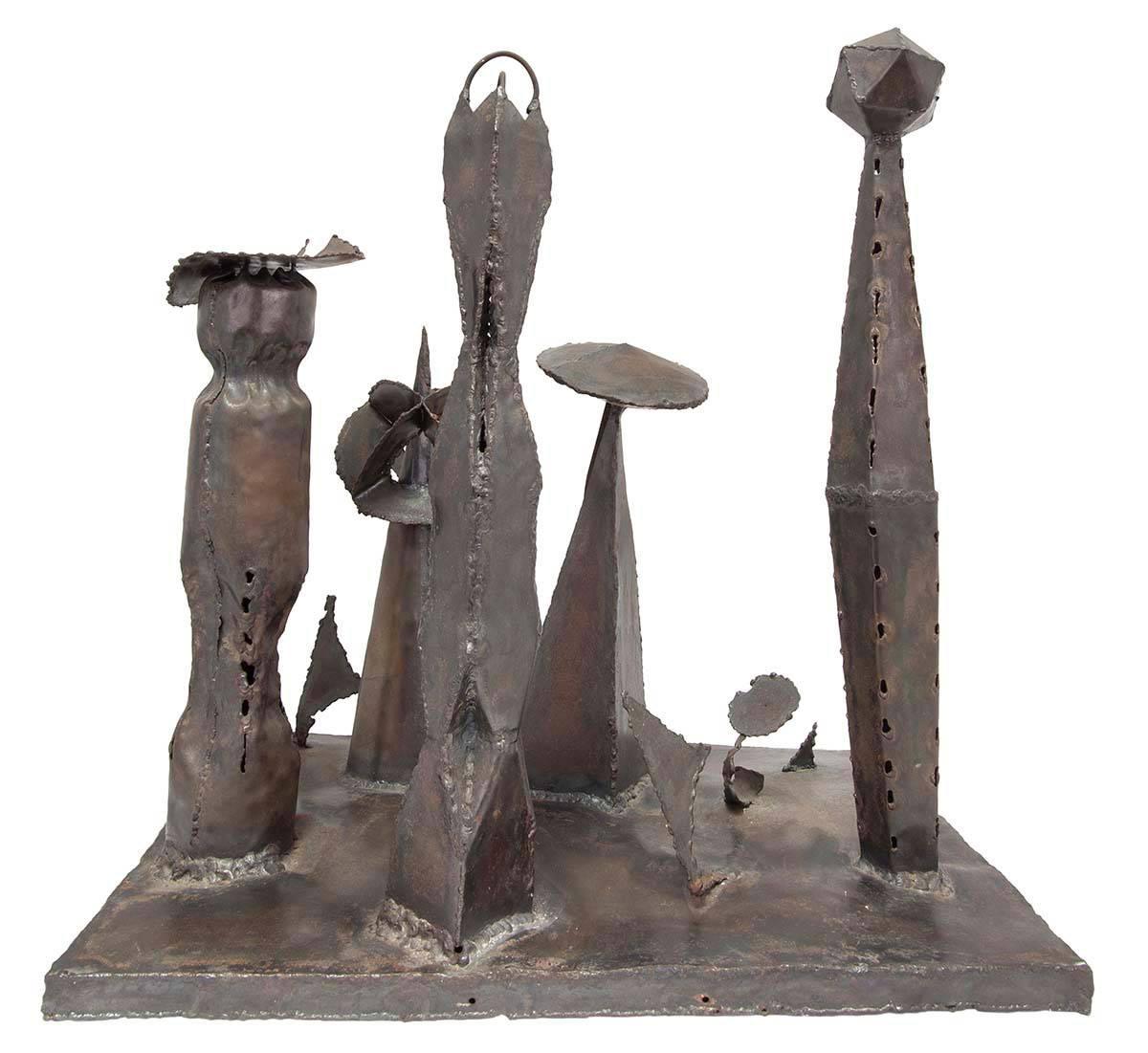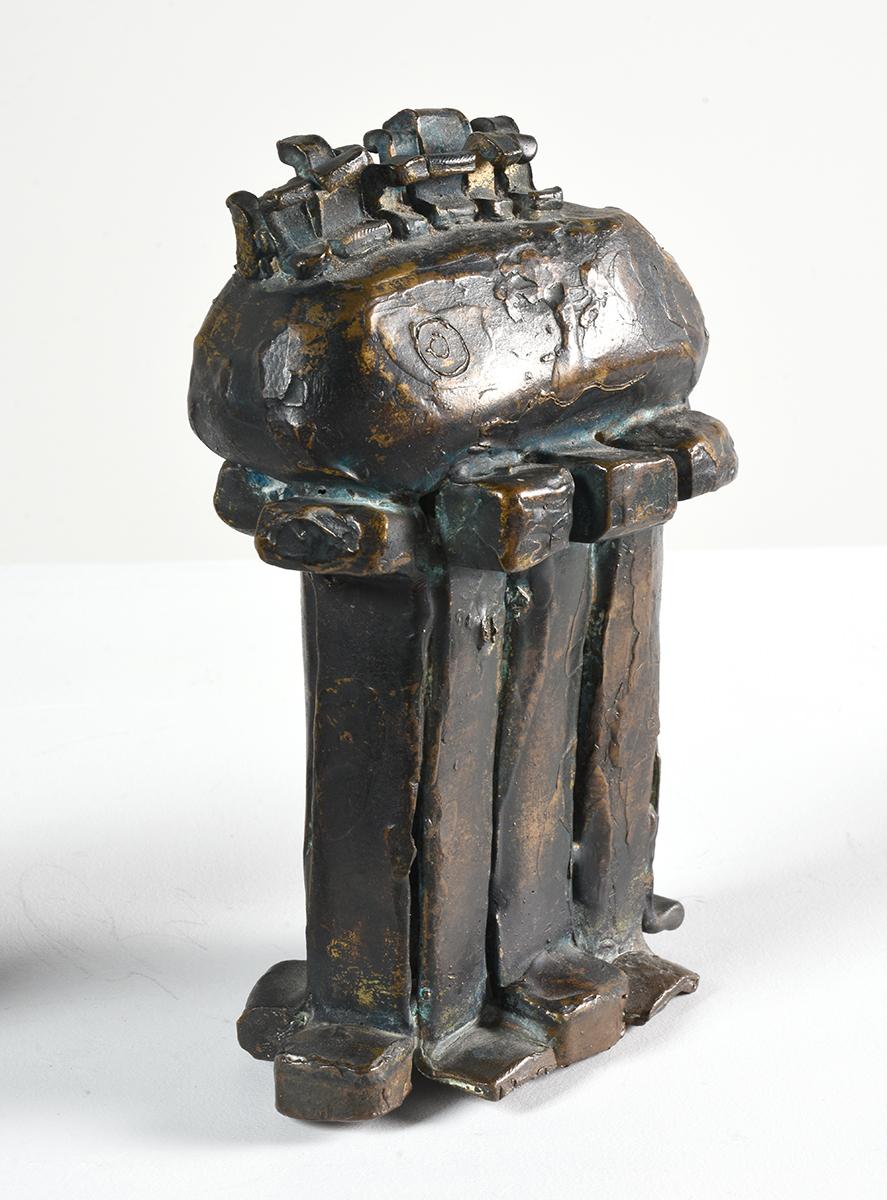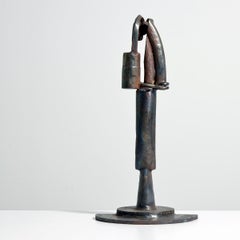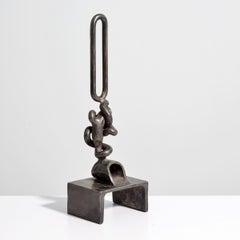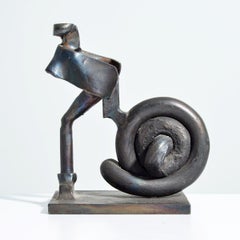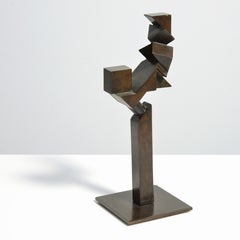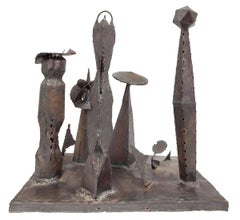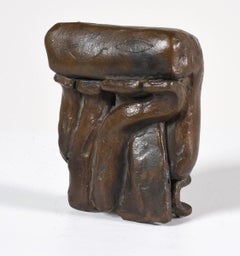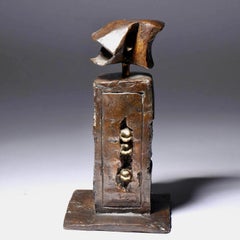Items Similar to Karl Stirner Abstract Brutalist Bronze Sculptures, Priced Each
Want more images or videos?
Request additional images or videos from the seller
1 of 14
Karl StirnerKarl Stirner Abstract Brutalist Bronze Sculptures, Priced Each
$1,500
£1,141.62
€1,307.47
CA$2,133.51
A$2,338.02
CHF 1,220.96
MX$28,096.61
NOK 15,264.16
SEK 14,396.54
DKK 9,758.80
About the Item
Artist/Designer; Manufacturer: Karl Stirner (German/American, 1923-2016)
Marking(s); notes: signed
Materials: bronze
Dimensions (H, W, D): largest; 21.5"h, 7.5"w, 5"d (varies, please inquire)
Additional Information: We have three sculptures available, priced each. Please inquire on availability, condition and dimensions. Provenance: Collection of Kenneth Endick & Cynthia Starr, Palm Beach Gardens, Florida, thence by descent. Karl Stirner's works are inspired by other well known contemporaries... Harry Bertoia, Abbott Pattison, and James Bearden.
"Karl brought new life to metal that had been discarded, whether from Bethlehem Steel, shipwrecks, or from his favorite scrapyard. He fused natural materials with manmade and juxtaposes smooth surfaces with rough and pitted ones to form organic shapes. Karl created a drama of contradiction, playing thick against thin, flexible against inflexible." (source: stirnermodern)
Please see our other Karl Stirner works listed on 1stdibs.
- Creator:Karl Stirner (1923 - 2016, American)
- Dimensions:Height: 19.75 in (50.17 cm)Width: 10 in (25.4 cm)Depth: 8 in (20.32 cm)
- Medium:
- Movement & Style:
- Period:
- Condition:good, patina to metal, nicks to edges and base (some or all likely inherent to the artist’s process) Note: please inquire on condition.
- Gallery Location:Lake Worth Beach, FL
- Reference Number:1stDibs: LU2698216549052
About the Seller
No Reviews Yet
Vetted Professional Seller
Every seller passes strict standards for authenticity and reliability
Established in 2003
1stDibs seller since 2024
Typical response time: 1 to 2 days
- ShippingRetrieving quote...Shipping from: Lake Worth Beach, FL
- Return Policy
Authenticity Guarantee
In the unlikely event there’s an issue with an item’s authenticity, contact us within 1 year for a full refund. DetailsMoney-Back Guarantee
If your item is not as described, is damaged in transit, or does not arrive, contact us within 7 days for a full refund. Details24-Hour Cancellation
You have a 24-hour grace period in which to reconsider your purchase, with no questions asked.Vetted Professional Sellers
Our world-class sellers must adhere to strict standards for service and quality, maintaining the integrity of our listings.Price-Match Guarantee
If you find that a seller listed the same item for a lower price elsewhere, we’ll match it.Trusted Global Delivery
Our best-in-class carrier network provides specialized shipping options worldwide, including custom delivery.More From This Seller
View AllKarl Stirner Abstract Brutalist Bronze Sculpture, 19.75"H
Located in Lake Worth Beach, FL
Artist/Designer; Manufacturer: Karl Stirner (German/American, 1923-2016)
Marking(s); notes: signed
Materials: bronze
Dimensions (H, W, D): 19.75"h, 10"w, ...
Category
20th Century Abstract Abstract Sculptures
Materials
Bronze
Karl Stirner Abstract Metal Sculpture
Located in Lake Worth Beach, FL
Additional Information: Karl Stirner's works are inspired by other well known contemporaries... Harry Bertoia, Abbott Pattison, and James Bearden. “Karl...
Category
Late 20th Century Contemporary Abstract Sculptures
Materials
Steel
Karl Stirner Abstract Metal Sculpture
Located in Lake Worth Beach, FL
Additional Information: Karl Stirner's works are inspired by other well known contemporaries... Harry Bertoia, Abbott Pattison, and James Bearden. “Karl...
Category
1990s Contemporary Abstract Sculptures
Materials
Steel
Gavin Zeigler Abstract Bronze Sculpture
By Gavin Zeigler
Located in Lake Worth Beach, FL
Artist/Designer: Gavin Zeigler (American, b. 1962)
Marking(s); notes: stamped signature; ed. 5/6
Materials: bronze
Additional Information: Sculpture
Category
20th Century Abstract Sculptures
Materials
Bronze
Alexander Ney Sculptures, Priced Each
By Alexander Ney
Located in Lake Worth Beach, FL
Artist/Designer: Alexander Ney (Russian/American, b. 1939)
Marking(s); notes: signed
Materials: terracotta, wood (base)
Dimensions: 11.5″oah; sculpture: 6.75″h, 3.5″w, 4.5″d; base (...
Category
20th Century Contemporary Figurative Sculptures
Materials
Terracotta, Wood
Peter Reginato Sculpture, 28"H
By Peter Reginato
Located in Lake Worth Beach, FL
Artist/Designer; Manufacturer: Peter Reginato (American, b. 1945)
Marking(s); notes: signed; 2006
Materials: resin/plastic over armature
Dimensions (H, W, D): 28"h, 20"w, 14"d (as me...
Category
Early 2000s Contemporary Abstract Sculptures
Materials
Resin
You May Also Like
Mid Century Modern Brutalist Welded Expressionist Sculpture After Paul Evans
Located in Surfside, FL
In this bronze sculpture the artist (unknown) has welded together a group of totems or monuments into a unified piece. T
Neo-Dada Abstract Sculpture: Assemblages
In contrast, abstra...
Category
Mid-20th Century Abstract Expressionist Abstract Sculptures
Materials
Metal
Eugene Caples "Bronze Sculpture II" Abstract Bronze Sculpture
By Eugene Caples
Located in Detroit, MI
This small exquisite "Bronze Sculpture II" is in excellent condition and a perfect example of Eugene Caples craftsmanship. This is mainly abstract with some graphic or architectural elements and is so delightful that mythical creatures demand to be considered. It cries out to be touched and held, looked at and caressed. The beautiful patina on the surface gives voice to the many hands that have done these things.
Eugene Caples is a designer and craftsman who worked in Kansas City in the 1960s and later through the early 21st century. He attended the Kansas City Art Institute, earning his Bachelors of Fine Arts in Industrial Design in 1959. In 1963 he was accepted to Cranbrook Academy of Art, Bloomfield Hills, Michigan. The Cranbrook Academy of Art was designed by architect and faculty member, Eliel Saarinen who collaborated with Charles and Ray Eames on chair and furniture design. Numerous creative artists are alumni of Cranbrook and include: Harry Bertoia, Florence Knoll, Jack Lenor Larsen, Donald...
Category
Late 20th Century American Modern Abstract Sculptures
Materials
Bronze
Eugene Caples "Bronze Sculpture I" Abstract Bronze Sculpture
By Eugene Caples
Located in Detroit, MI
This small exquisite "Bronze Sculpture I" is in excellent condition and a perfect example of Eugene Caples craftsmanship. Although it is mainly abstract, there are bits that look figurative either an arm or a leg attempting to emerge from a fold or attempting to hold a pose such as in yoga. It cries out to be touched and held, looked at and caressed. The beautiful patina on the surface gives voice to the many hands that have done these things.
Eugene Caples is a designer and craftsman who worked in Kansas City in the 1960s and later through the early 21st century. He attended the Kansas City Art Institute, earning his Bachelors of Fine Arts in Industrial Design in 1959. In 1963 he was accepted to Cranbrook Academy of Art, Bloomfield Hills, Michigan. The Cranbrook Academy of Art was designed by architect and faculty member, Eliel Saarinen who collaborated with Charles and Ray Eames on chair and furniture design. Numerous creative artists are alumni of Cranbrook and include: Harry Bertoia, Florence Knoll, Jack Lenor Larsen, Donald Lipski, Duane Hanson, Nick Cave, Hani Rashid, George Nelson, Urban Jupena (Nationally recognized fiber artist), Artis Lane (the first African-American artist to have her sculpture, "Sojourner Truth," commissioned for the Emancipation Hall in the Capital Visitor Center in Washington DC), Cory Puhlman (televised Pastry Chef extraordinaire), Thom O’Connor (Lithographs), and Paul Evans (Created Brutalist-inspired sculpted metal furnishings.)
Gene worked...
Category
Late 20th Century American Modern Abstract Sculptures
Materials
Bronze
Personnage Modern Bronze Sculpture
By James Coignard
Located in Lake Worth Beach, FL
Personnage Patinated Bronze
Artist signed edition 7/24
JAMES COIGNARD (1925-2008)
Painter of still lifes; Mised Media Painter; Collages; Sculptor; Engraver; Expressionistic style, l...
Category
1970s Abstract Expressionist Abstract Sculptures
Materials
Marble, Bronze
Bronze Sculpture by Rodger Mack, circa 1970s
By Rodger Mack
Located in St.Petersburg, FL
An unusual 1970s modernist sculpture in bronze by a noted American sculptor Rodger Mack (1968-2002). An abstract chariot in steampunk style...
A quick note about Rodger Mack:
"Born i...
Category
Vintage 1970s American Modern Abstract Sculptures
Materials
Bronze
Steffen Lüttge Bronze Abstract Sculpture, 1980s, Denmark
Located in Raleigh, NC
A striking abstract form, cast bronze sculpture by Danish artist Steffen Lüttge. With brutalist and organic aspects this vintage sculpture is a true or...
Category
Vintage 1980s Abstract Sculptures
Materials
Bronze
